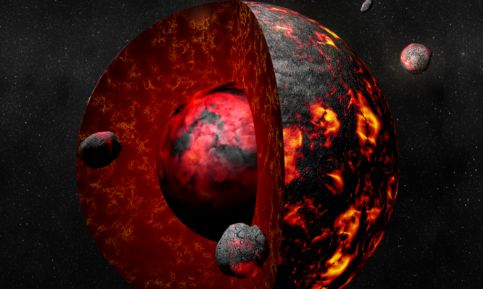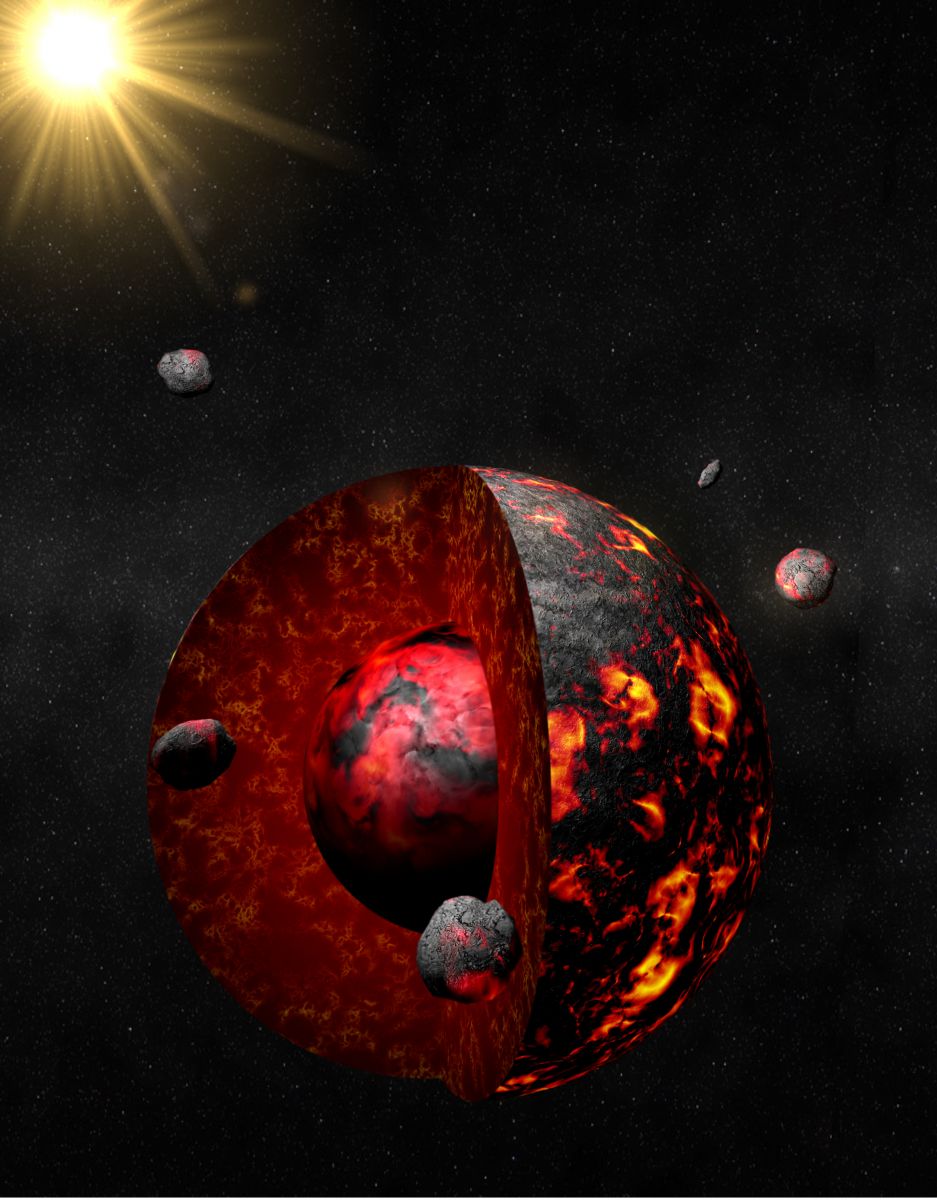New research shows Earth’s core is more abundant in oxygen than previously thought

An international team of scientists has concluded the oxygen is more abundant in the core of the Earth than previously thought, by considering the combined geophysical and geochemical signatures of the planet. Results were published in the online September 21 – 25, 2015 edition of the Proceedings of the National Academy of Sciences.
Lawrence Livermore geologist Rick Ryerson and his international colleagues from Institut de Physique du Globe de Paris, École Polytechnique Fédérale de Lausanne and University College London, have discovered the oxygen concentration of the Earth's core is higher than previous research suggested.
Based on this discovery, the team has concluded Earth's accreted material must be more abundant in oxygen than its present day mantle, similar to the accreted material found in planetesimals such as asteroids. Planetesimals are space objects composed of dust, rock and other material. Their size varies between several meters to hundreds of kilometers.

Model showing planetesimals accreting to a growing Earth 4.56 billion years ago. The cutaway reveals the simultaneous formation of the Earth's core as dense, iron-rich metallic material descending through a planetary magma ocean. Image credit: Antoine Pitrou/Institut de Physique du Globe de Paris.
This new results possibly provides a deeper insight into how the Earth originally formed in the first place. According to known facts, our planet formed about 4.56 billion years ago in the process of accretion of planetary embryos and planetoid bodies that lasted for about several tens of millions of years.
The process of formation left a trail inside the Earth's core and mantle, visible to this day in the planet's geophysical and geochemical signatures. Previous research has observed the compositional signatures of planet's core and mantle separately, rather than together.
By combining the signatures and using the knowledge of experimental petrology, geochemistry, mineral physics and seismology, researchers found the Earth's core has been formed in a hot, up to 1 800 km (1 118 miles) deep, liquid magma ocean, in conditions much richer with oxygen than present-day Earth.
“This new model is at odds with the current belief that core formation occurred under reduction conditions. Instead we found that Earth’s magma ocean started out oxidized and has become reduced through time by oxygen incorporation into the core,” Ryerson said.
The scientists have concluded the oxygen concentration in the core is higher, and the concentration of silicon lower than previously thought.
Source: Lawrence Livermore National Laboratory
Featured image: The theoretical model showing planetesimals accreting to a growing Earth 4.56 billion years ago. Image credit: Antoine Pitrou/Institut de Physique du Globe de Paris.

The more we know, the less we know.